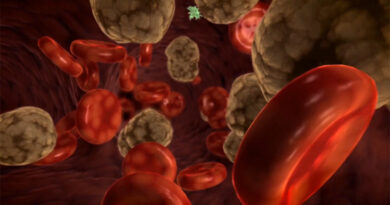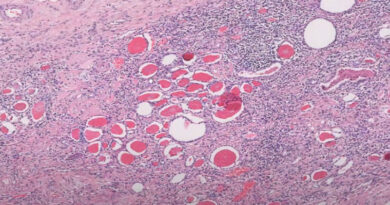Different Types of Cancer
Last Update on September 14, 2022
| Carcinoma | Sarcoma | Leukemia | Lymphoma | Multiple Myeloma | Melanoma | Brain and Spinal Cord Tumors | Germ Cell Tumors | Neuroendocrine Tumors | Carcinoid Tumors |
There are more than 100 different types of cancer that exist. Usually, types of cancer are named after the organs or tissues where cancer initially presents. For example, brain cancer appears in the brain and lung cancer starts in the lung. Cancer can also be identified by the type of cell that caused it, such as an epithelial cell or a squamous cell.
Here are different types of cancer that start in particular cell types:
1. Carcinoma:
One of the most common types of cancer is carcinoma. The Epithelial cells line the interior and exterior surfaces of the body and are responsible for carcinoma-type cancer formation. Epithelial cells come in a variety of varieties, and when they are magnified under a microscope, they are frequently like columns.
2. Sarcoma:
Tumors called sarcoma grow in muscle, fat, blood vessels, lymphatic vessels, and fibrous tissue, which make up soft tissues and bone (such as tendons and ligaments). It is a common cancer form in different types of cancer.
Osteosarcoma is the basic type of bone cancer. Liposarcoma, Kaposi sarcoma, malignant fibrous histiocytoma, liposarcoma, and dermatofibrosarcoma protuberans are the most common forms of soft tissue sarcoma.
3. Leukemia:
Leukemia is a cancer that starts in the bone marrow, which produces blood. Instead, the bone marrow and blood become overpopulated with abnormal white blood cells (leukemia cells and leukemic blast cells), which drive out healthy blood cells. It may be more difficult for the body to manage to bleed, fight infections, or deliver oxygen to its tissues when the normal blood cell count is low.
4. Lymphoma:
Cancer that appears in lymphocytes is called lymphoma (T cells or B cells). These white blood cells, which are a component of the immune system, fight disease. Abnormal cells build up in the body’s lymph nodes, lymph arteries, and other tissues in lymphoma cancer.
5. Multiple Myeloma:
A different type of immune cell called plasma cell is where multiple myeloma develops. Myeloma cells, aberrant plasma cells that cause malignancies in bones throughout the body, accumulate in the bone marrow. Other names for multiple myeloma include Kahler disease and plasma cell myeloma.
6. Melanoma:
Melanoma is a type of cancer that starts in cells that develop into melanocytes, which are specialized cells that produce melanin (the pigment that gives skin its color). Although melanomas typically appear on the skin, cancer can also appear in other pigmented tissues, such as the eye.
7. Brain and Spinal Cord Tumors:
This is one of the types of cancer that tumors of the brain and spinal cord can take many different forms. These tumors are given names based on the cell type in which they originated and the region of the central nervous system where cancer first appeared. For instance, astrocytes, which assist maintain the health of nerve cells in the brain, are the origin of an astrocytic tumor. Brain tumors may be malignant (cancer) or benign (not cancer) (cancer).
The resources listed below can help you learn more about particular types of cancer.
- appendix cancer
- Carcinoma cancer
- Sarcoma cancer
- bladder cancer
- bone cancer
- brain cancer
- breast cancer
- cervical cancer
- colon or colorectal cancer
- duodenal cancer
- ear cancer
- endometrial cancer
- esophageal cancer
- heart cancer
- gallbladder cancer
- kidney or renal cancer
- laryngeal cancer
- leukemia
- lip cancer
- liver cancer
- lung cancer
- lymphoma
- mesothelioma
- myeloma
- oral cancers
- ovarian cancer
- pancreatic cancer
- penile cancer
- prostate cancer
- rectal cancer
- skin cancer
- small intestine cancer
- spleen cancer
- stomach or gastric cancer
- testicular cancer
- thyroid cancer
- uterine cancer
- vaginal cancer
- vulvar cancer
Other Types of Tumors:
8. Germ Cell Tumors:
Germ Cell Tumors are one of the types of cancer that start in the cells that produce sperm or egg known as germ cell tumors. These tumors can be benign or cancerous and can develop practically anywhere in the body.
9. Neuroendocrine Tumors:
Cells that release hormones into the blood in response to a signal sent from the nervous system are the source of neuroendocrine tumors. These tumors can produce a wide range of symptoms because they may produce higher than usual levels of hormones. Malignant or benign neuroendocrine tumors are also possible.
10. Carcinoid Tumors:
Neuroendocrine cancers include carcinoid tumors. Typically, they are slow-growing tumors that affect the digestive system (most often in the rectum and small intestine). Carcinoid tumors can emit chemicals like serotonin or prostaglandins, which can lead to carcinoid syndrome. They can also move to the liver or other parts of the body.



